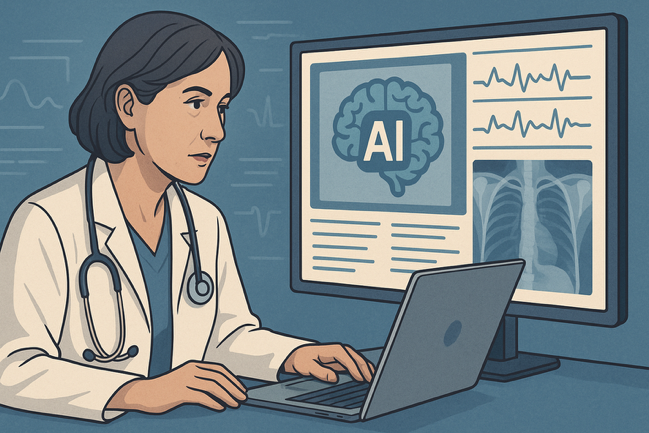Microsoft has unveiled an AI system that outperforms human doctors in diagnosing complex medical cases. The company describes this breakthrough as a “medical superintelligence,” where AI surpasses human diagnostics in healthcare decision-making. This development could revolutionize how complex diagnoses are made and how doctors work alongside AI.
What’s Happening & Why This Matters
Microsoft’s AI team, led by tech pioneer Mustafa Suleyman, designed a system that mimics a panel of expert physicians tackling challenging medical cases. The AI works with OpenAI’s advanced o3 model to solve complex diagnostic problems. When tested with over 300 interactive case studies from the New England Journal of Medicine (NEJM), the AI solved more than eight out of ten cases. Practicing doctors, however, solved only two out of ten under the same conditions without help from colleagues, textbooks, or AI tools.
The AI system operates step-by-step, just like a real doctor. It asks specific questions, orders relevant tests, and narrows down diagnoses. For example, if a patient has a cough and fever, the system may recommend blood work and a chest X-ray before diagnosing pneumonia.
Microsoft points out that AI is more efficient than doctors in ordering tests, potentially reducing healthcare costs. Despite these advantages, Microsoft stresses that AI is meant to support — not replace — doctors. Doctors do much more than diagnose; they manage uncertainty and build relationships with patients, which AI cannot replicate.
The term “medical superintelligence” implies a future where AI exceeds human knowledge and reasoning across all medical fields. Unlike the multiple-choice medical exams on which AI often excels, this system emphasizes deep understanding and dynamic problem-solving.
Microsoft’s approach uses a custom “diagnostic orchestrator” that guides AI models from OpenAI, Meta, Anthropic, Grok AI, and Google Gemini through a diagnostic process. This orchestrator acts like a panel of experts, combining insights from various specialties.
This level of expertise surpasses what any single physician can offer. Microsoft believes that scaling this reasoning power could reshape healthcare by empowering patients to self-manage routine care and helping doctors make more informed decisions on complex cases.
Microsoft cautions that the system isn’t ready for clinical use… yet. More testing is required, especially for common symptoms and real-world applications.
TF Summary: What’s Next
Microsoft’s AI diagnostic system demonstrates how artificial intelligence can dramatically improve complex medical diagnoses. It promises to enhance healthcare quality while supporting clinicians rather than replacing them. Future work will focus on validating the technology in clinical settings and expanding its capabilities.
As AI becomes smarter and more integrated, it has the potential to transform patient care and clinical workflows for the better. The journey toward medical superintelligence is still in its infancy, with Microsoft leading a critical advance in AI-assisted medicine.
— Text-to-Speech (TTS) provided by gspeech


